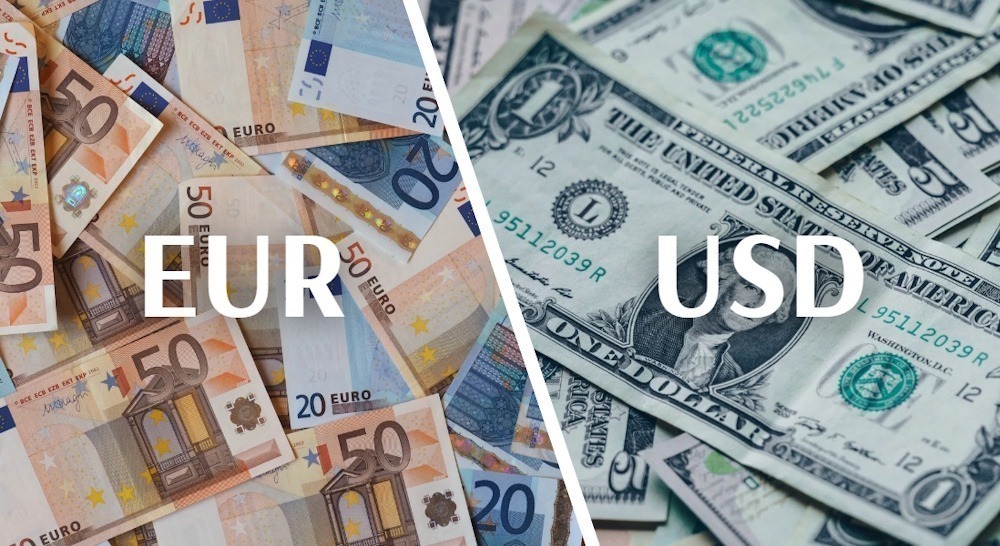The EUR/USD pair rises above the 1.1600 level on Thursday, hitting a two-week high of 1.1656, yet faces challenges in surpassing the important resistance point of the 50-day Simple Moving Average at 1.1661. Catalysts such as the reopening of the US government and high US Treasury yields failed to bolster the US Dollar, which continued to face pressure despite traders lowering their expectations for a December Fed rate cut. The Euro is currently trading at approximately 1.1630, reflecting a gain of 0.38%. Meanwhile, the US Dollar Index has decreased by 0.34%, now standing at 99.14.
EUR/USD reaches 1.1656 but faces obstacles just under 1.1661 as the US Dollar displays signs of weakness, despite diminished expectations for Fed rate cuts. Market sentiment has worsened after the US government reopened, with traders now estimating only a 50% chance of a rate cut in December. Federal Reserve officials continue to adopt a largely hawkish position, while industrial production in the Eurozone rises by 0.2%, which is below what was anticipated.
> The Euro moves past 1.1600 as the DXY falls; yet, the failure to break through the 50-day SMA dampens bullish momentum : Investor confidence has diminished as market faces declines after the US government has reopened. The imminent release of crucial information for the Federal Reserve ahead of next month’s meeting has sparked doubts among investors about the possibility of another rate cut. At present, there is a 50% chance that the Fed might opt to keep rates unchanged. Various elements could play a role in this, particularly as numerous Fed officials have upheld a relatively aggressive position, despite acknowledging the shortcomings in the labor market. On Thursday, St. Louis Fed Alberto Musalem, Cleveland’s Beth Hammack, and Minneapolis President Neel Kashkari expressed their worries about inflation. Conversely, Mary Daly took a more lenient approach while emphasizing that the Federal Reserve’s goal for inflation is still set at 2%. Furthermore, Industrial Production in the Eurozone demonstrated a recovery in September, bouncing back from a decline of -1.1% to a growth of 0.2% MoM, even though it did not meet the expected 0.7%. Recently, a member of the European Central Bank and President of the Bundesbank, Joachim Nagel, stated that “any central banker on the ECB governing council should be eligible to succeed Lagarde,” once her term concludes.
Latest FX Rate Trends : Euro stays stable in light of hawkish remarks from Fed officials
- Alberto Musalem from the St. Louis Federal Reserve noted that monetary policy is closer to a neutral stance instead of being slightly restrictive. “Moving ahead, I believe we should advance carefully,” he noted, emphasizing that inflation is still high at 3%. Cleveland’s Beth Hammack emphasized the importance of a stringent monetary policy to control inflation, while also acknowledging that the risks tied to the dual mandate are presently in equilibrium.
- Minneapolis Fed President Neel Kashkari noted that the economy is showing mixed signals, but he stressed that inflation remains “too high,” sitting at approximately 3%. In contrast, San Francisco Fed President Mary Daly remarked that it is “premature to say definitely no cut or definitely cut” in December, emphasizing that the Fed’s dual mandate is currently balanced while acknowledging the weakening of the labor market.
- The US House of Representatives approved a temporary funding bill late Wednesday with a vote of 222–209, guaranteeing that federal government operations will continue until January 30, 2026, while some agencies will be funded through September 2026. However, the possibility of another shutdown in early February 2026 still hangs over the fiscal landscape.
- The resolution allows for the release of a backlog of US macroeconomic data; however, the White House has cautioned that the employment and inflation reports for October may not be published because of the prolonged shutdown.
- Excitement is growing for the upcoming release of the September Nonfarm Payrolls next week. However, White House economic adviser Kevin Hassett indicated that the Unemployment Rate will remain undisclosed.
- In October, German inflation figures remained stable at around 2.3% YoY, well within the guidelines established by the European Central Bank.

